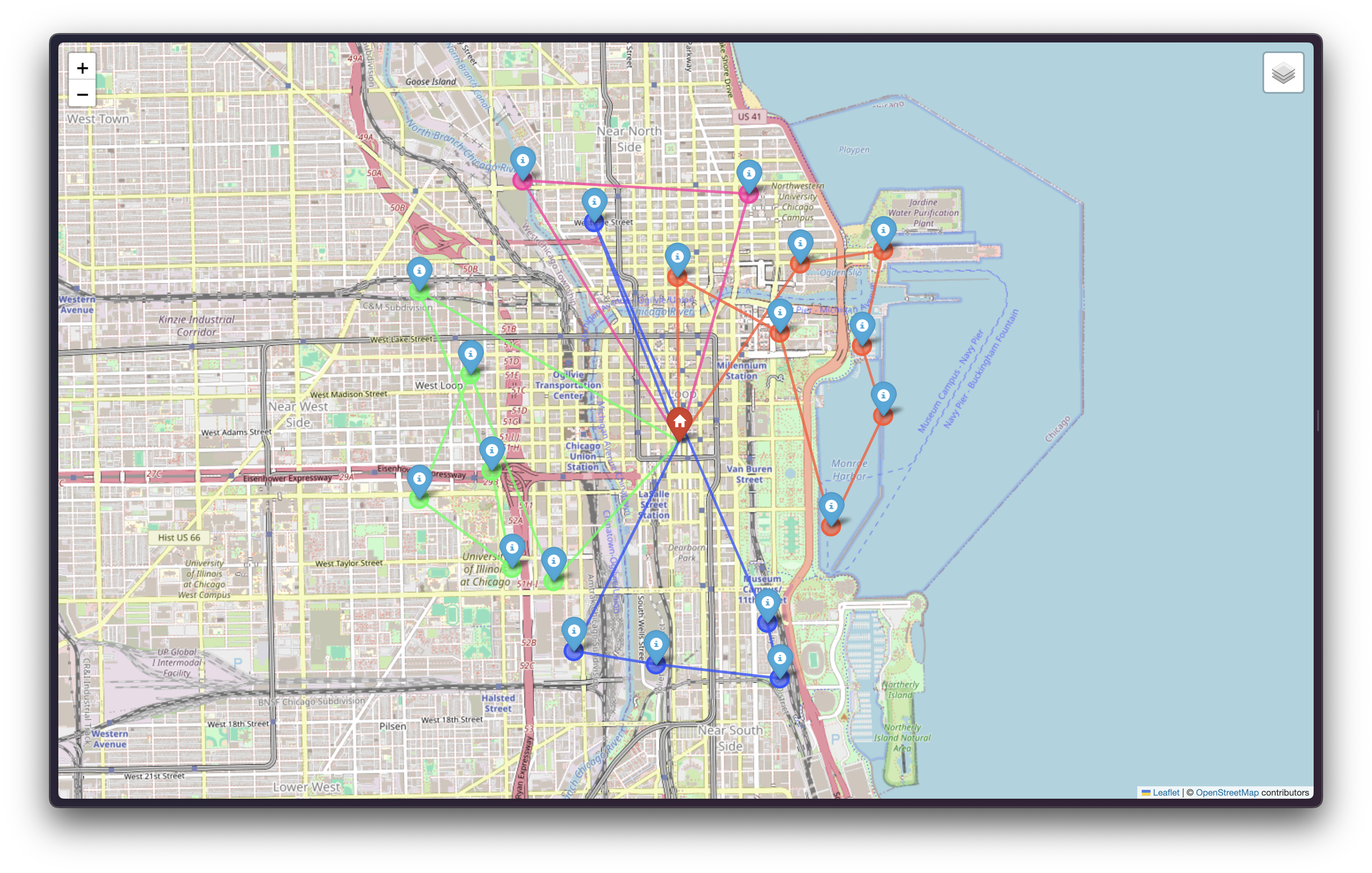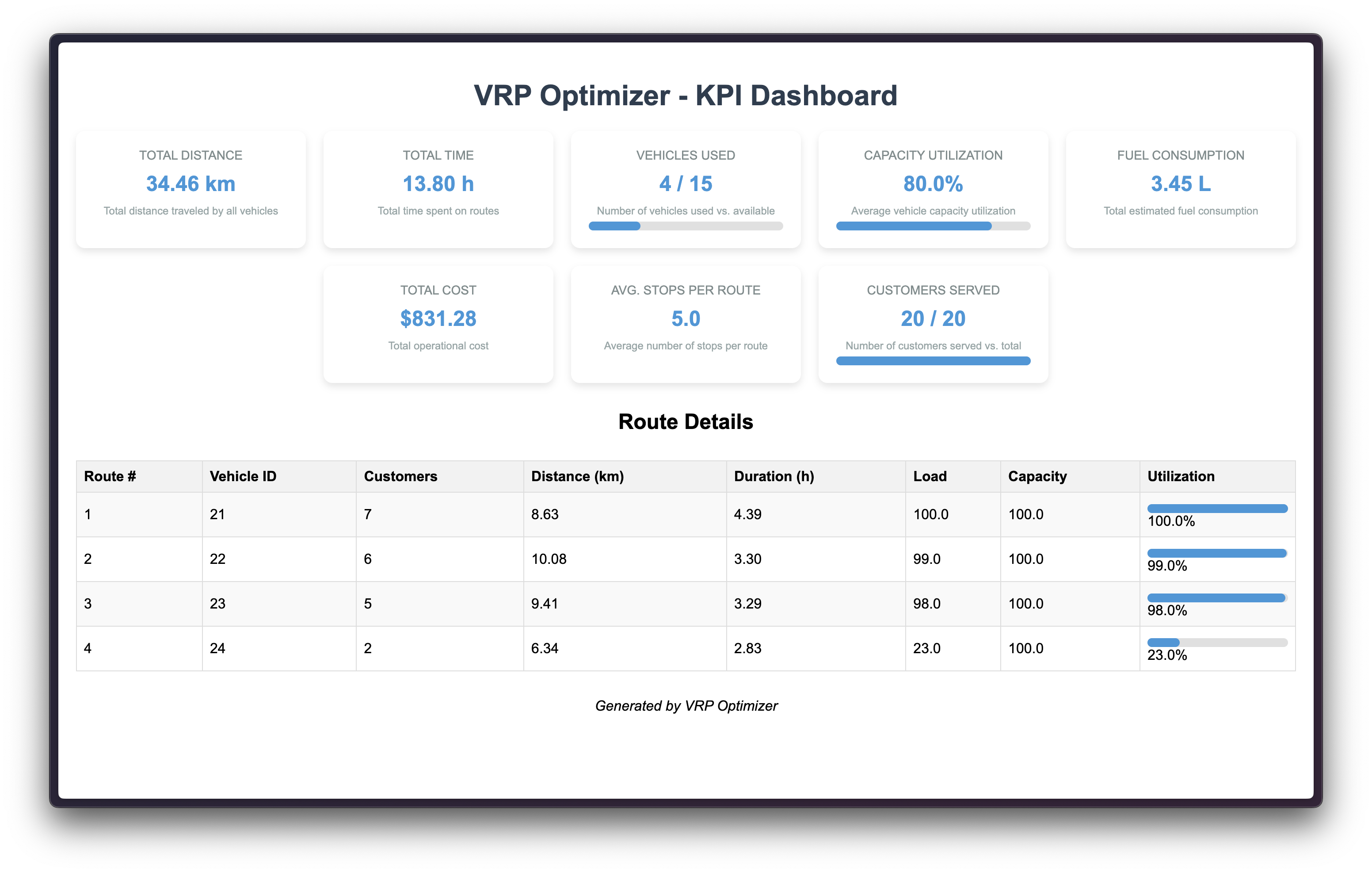

VRP Optimizer: Logistics Optimization Tool
Brief
A sophisticated vehicle routing optimization system that implements the Adaptive Large Neighborhood Search (ALNS) algorithm to solve the Vehicle Routing Problem (VRP) for logistics fleets.
This project addresses the critical challenge faced by logistics companies in optimizing delivery routes to minimize costs, reduce environmental impact, and maximize efficiency. By implementing advanced algorithms and considering real-world constraints, the system provides practical solutions to complex routing problems.
My Contribution
As the lead developer on this project, I designed and implemented the core optimization algorithm and supporting infrastructure.
- Implemented the ALNS algorithm with custom operators for the vehicle routing problem
- Developed data processing modules for handling real-world logistics data
- Created visualization tools for route maps, KPI dashboards, and performance metrics
- Designed an environmental impact analysis system to track emissions and fuel consumption
Technical Details
The system is built around a modular architecture that separates concerns for data processing, optimization algorithms, and visualization.
Key Components
- Data Module: Handles data loading, preprocessing, and validation of input constraints
- ALNS Engine: Core optimization algorithm with destroy/repair operators and adaptive weight adjustment
- Constraint Handler: Manages time windows, capacity limits, and other real-world constraints
- Visualization System: Generates interactive maps, metrics dashboards, and performance reports
- Environmental Analysis: Calculates and reports CO2 emissions and fuel consumption
Key Features
Advanced ALNS Algorithm
The heart of the system is an Adaptive Large Neighborhood Search algorithm that efficiently explores the solution space by iteratively destroying and repairing solutions. The algorithm adapts operator weights based on performance, allowing it to focus on the most effective strategies for each specific problem instance.
Real-world Constraints Support
The system handles complex constraints including time windows, vehicle capacities, driver working hours, and traffic patterns, ensuring that generated routes are practical and implementable in real-world scenarios.
Interactive Visualizations
Comprehensive visualization tools provide stakeholders with clear insights into the optimized routes, performance metrics, and environmental impact. Interactive maps show detailed routes, while dashboards highlight key performance indicators.
Environmental Impact Analysis
An integrated analysis system calculates the environmental impact of each routing solution, tracking CO2 emissions and fuel consumption to support sustainability goals and regulatory compliance.
Technical Challenges
Developing an effective routing optimization system presented several significant challenges:
- Algorithm Performance: Balancing solution quality with computational efficiency required careful tuning of operator selection probabilities and acceptance criteria
- Real-world Data Complexity: Handling noisy and incomplete real-world logistics data required robust preprocessing and validation systems
- Multi-objective Optimization: Balancing competing objectives like distance minimization, time window compliance, and load balancing required sophisticated solution evaluation metrics
- Scalability: Ensuring the system could handle large problem instances with hundreds of customers and multiple vehicles required algorithmic optimizations and efficient data structures
Takeaways
This project deepened my understanding of combinatorial optimization algorithms and their real-world applications. I gained valuable experience in implementing and tuning complex algorithms, handling real-world constraints, and creating meaningful visualizations for operational data. The project also enhanced my skills in balancing theoretical optimization techniques with practical constraints to deliver solutions that make a tangible impact on logistics operations and environmental sustainability.